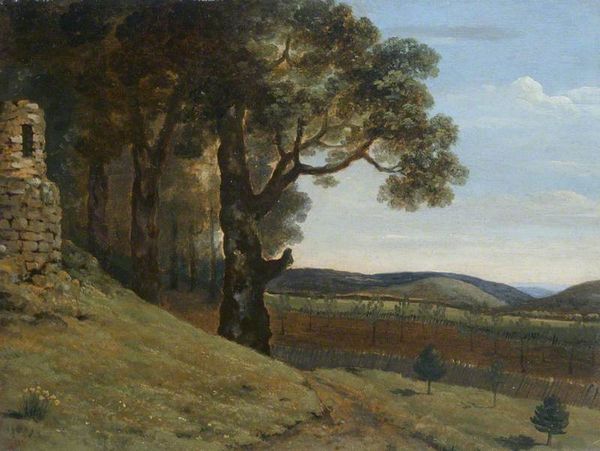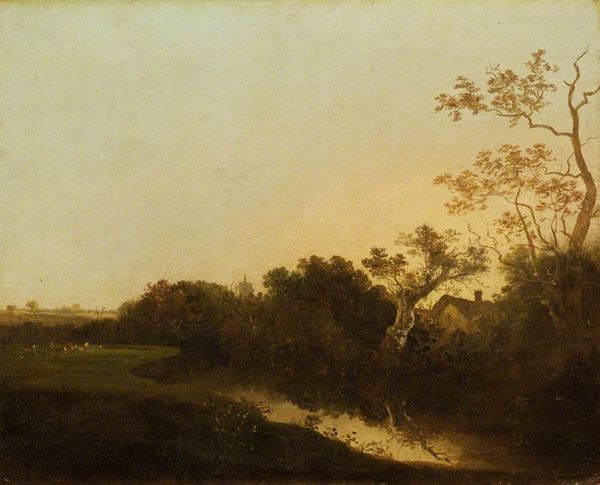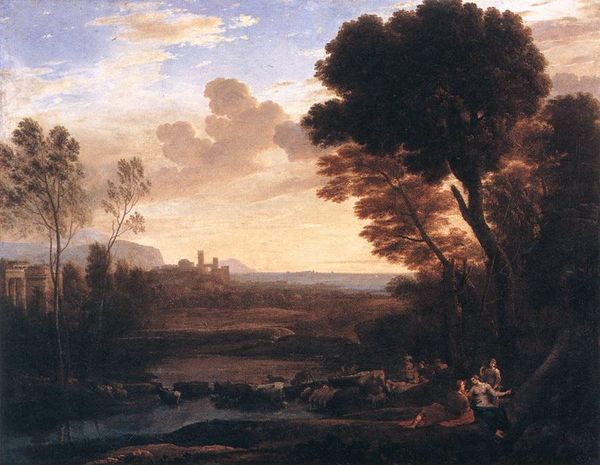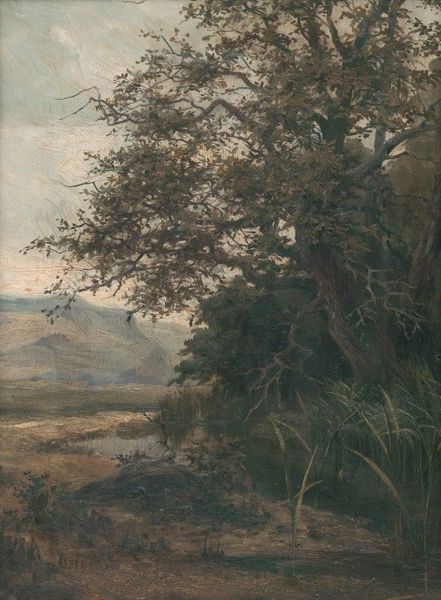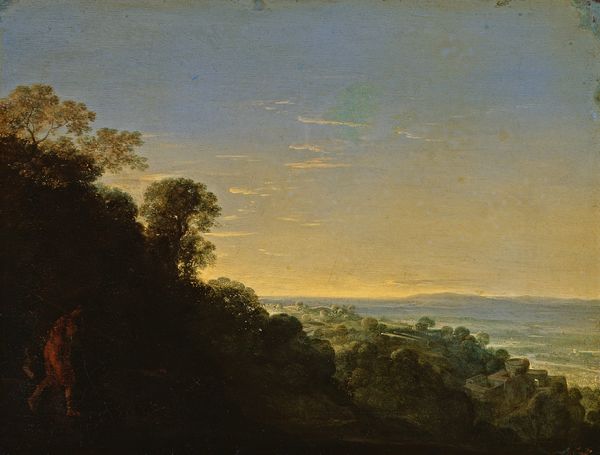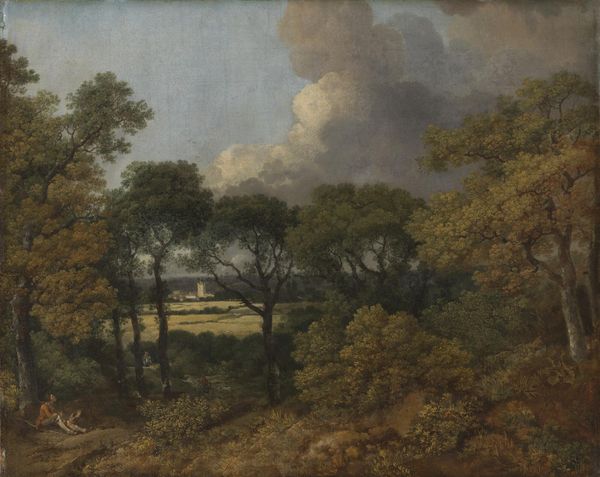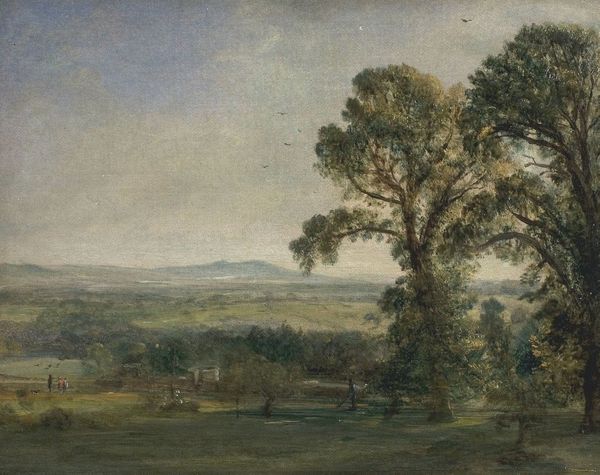
Copyright: Public domain
Editor: So this is "The Bay of Naples" painted en plein-air by Thomas Jones in 1782. There’s a stillness about this scene, like time is standing still. What do you make of it? Curator: Well, I find it very telling that Jones chose to paint this view during his time in Italy. Beyond the surface-level beauty of the Bay, consider what Naples represented during that period – a crossroads of culture, a major port city grappling with immense social disparities. Does the serene, almost idealized depiction of the landscape perhaps serve to obscure these complexities? Editor: I hadn't really considered that. You mean like, the painting ignores the less picturesque aspects of the city's life? Curator: Exactly. Romanticism often focused on the sublime, and idealised nature as a refuge, but who was that refuge for? Can landscape paintings such as this sometimes function as an escape from, or even a denial of, the more pressing socio-political realities of the time? Notice how tiny the figures are in the landscape. Do they blend in or stand out? Editor: I see what you mean. They almost disappear into the landscape. So maybe Jones wasn’t just painting what he saw, but making a statement, even if it's subtle, about class or access. Curator: Precisely! And it makes you think, doesn't it, about who gets to define 'beauty' and whose stories get told—or erased—in the process. Editor: This gives me so much more to think about than just pretty scenery. Thank you. Curator: My pleasure. It's about peeling back the layers to reveal the deeper dialogues that art can have with history.
Comments
No comments
Be the first to comment and join the conversation on the ultimate creative platform.
